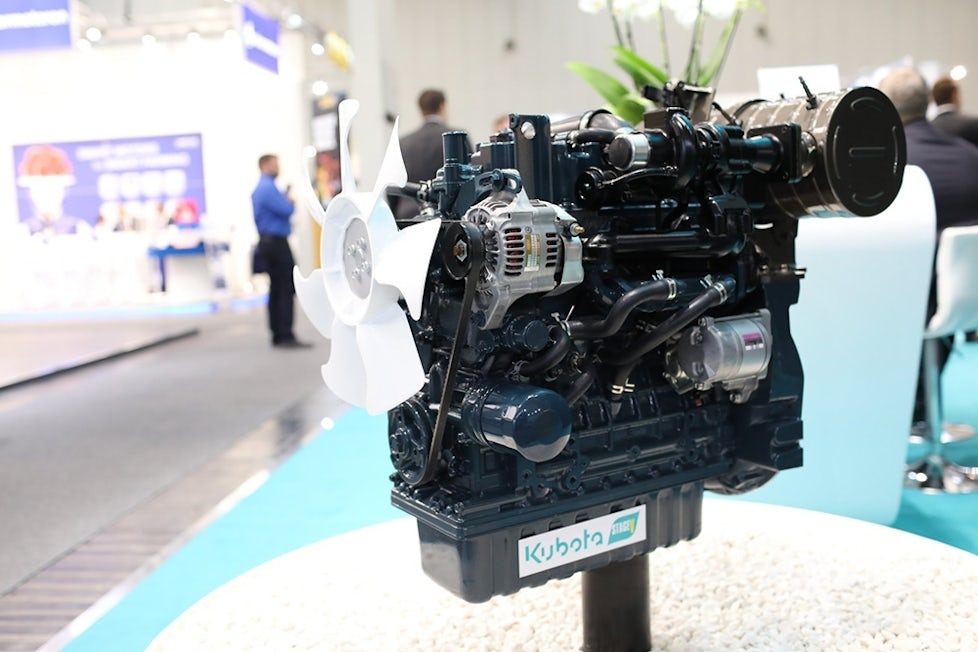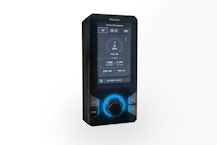- Produits
Intelligent Tech set to Transform the Sewer Cleaning Sector

Technological advancements over recent years have brought huge changes to the drain and sewer cleaning industry, with equipment manufacturers switching their focus towards developing machines that are easier to use, transport, connect to and customise. Marc Soethout, Chief Product Developer at Rioned, says that while scepticism in the industry to new tech still exists, the benefits for contractors far outweigh the barriers.
An increasing number of drainage contractors are embracing modern technology as a cost-effective alternative to traditional methods. The use of intelligent remote control units, sophisticated machine control panels and features such as hose reel distance counters, offers operators more control of equipment than ever before.
Take, for example, the ability to receive machine warnings at a glance and monitor daily operations, such as water usage and running time. As an enabler in the industry-wide switch towards single-man operations and single-resolution visits, the benefits of these features are clear.
Marc Soethout admits that advancements over the past 15 years have seen Rioned adapt its business model with technology as a priority.
“To develop the new technology for our machines, we looked primarily at the car industry and its markets,” he explains. “The connectivity and technologies in electric vehicles make for smarter cars and that was the biggest inspiration.
“Customers now look for more sophisticated equipment rather than just the design of the machine itself, and we’ve tried to integrate that in the development process.”

Stage V Engine Regulations
European Stage V engine regulations, which came into force in 2019, have heralded perhaps the biggest change in the industry over recent years. Intended to better regulate and reduce engine emissions, the new rules have forced the reconfiguration of a wide range of popular diesel-powered machines.
Jetters with common-rail engines fitted with DPF filters have recently entered the market, with manufacturers also developing a range of diesel units that operate below the 19kW power threshold. Rioned’s 33kW (44HP) CityJet V1505-CR was launched in late 2020, and the firm has also redesigned its popular Urbanjet model to comply with Stage V regulations.
It’s a change that Marc Soethout says Rioned has embraced: “With our machines, we’ve been focusing more on cleaner engines as the standard pumps and nozzles have tended to remain the same over the last decade.”
Stage V regulations and the growth of ULEZ (Ultra Low Emission Zones) across European cities have brought about a shift away from high-performance diesel engines, fuelling the development of alternative power sources. But, in an industry traditionally powered by diesel, this change has not always been met with enthusiasm.
The Use of Alternative Power Sources
Although not new technology, machines operated by PTO (Power take-off) from vehicle engines have become seen a resurgence in recent years. Traditionally utilised by larger equipment, advancements in Euro 6 compliant vehicle engines mean this type of power supply can be used in smaller units such as jetting vans.
The same is true for high-performance petrol machines, with intelligent, fuel-injection engines more readily available. Although still somewhat undervalued in the industry, petrol machines are often lighter and more fuel-efficient than their diesel counterparts, whilst still providing an industry-standard performance.
A stumbling block to using petrol has always been that engines run a lot hotter than diesel but developments to dissipate residual heat from the engine have overcome most of these issues.

The Introduction of Electric Machines
Echoing the car industry, electric and hybrid machines are seen as the next great leap forward in equipment development. Marc Soethout has overseen the development of the eCityJet, the world’s first all-electric high-performance jetting machine, and says that battery-driven machines have been the most important new development in his 21 years at Rioned.
Powered by Lithium-ion batteries, similar to those used in electric vehicles, the eCityjet has the performance and features associated with a conventional jetter but produces zero emissions. Battery operation also massively reduces operational noise, making it ideal for urban areas where noise restrictions may be in effect. The new jetter also only weighs marginally more than its diesel counterpart, meaning it can be installed in most commercial vans.
Over the past 12 months, the eCityJet has been put through extensive trials in The Netherlands, and Marc says they have been delighted by the response from those using the machine.
“Of course, we did set the bar high for ourselves,” he says. “But by remaining critical and not making any concessions we have succeeded in creating this innovative product.”

Single-man, Single Resolution Vehicles
New technology and advances in engineering processes have led to more compact and efficient equipment, creating additional space in vehicles for contractors to carry the tools needed to undertake multiple drainage tasks in a single visit. Often known as multi-purpose vehicles, modern jetting vans often carry CCTV survey systems, drain-lining kits, cable machines, rods and other essential tools.
Compact jetvac units are also an increasingly common sight on the roads, with units such as Rioned’s 7.5t RioCom offering both powerful vacuum and jetting capabilities comparable with much larger units.
The RioCom is equipped with a Euro 6 compliant direct-injection engine that uses PTO converting power from the low-emission vehicle engine to operate the pumps. Lightweight and highly manoeuvrable, the RioCom is a cost-effective, low-emission single-resolution unit ideal for use in congested city centres and low-emission zones.
Alongside compact multi-purpose vehicles, the use of increasingly sophisticated remote control systems allows a single operator to carry out work that would have previously required two people. Besides the obvious efficiency of single-man operations, the ability to fine-tune the pressure and flow at a distance from the vehicle offers savings on time, running costs and water usage.
Modern remotes, such as Rioned’s RioMote, use FHSS (Frequency Hopping Spread Spectrum) to search for the strongest frequencies, creating a bigger transmitting range for use in densely populated areas. New ergonomic designs also make the device easier to hold and operate whilst wearing gloves.

Increased Machine Control and Monitoring
Much like engine control units (ECUs) in vehicles, modern drain cleaning machines incorporate system monitoring technology for enhanced machine control.
Rioned were the first company in the drainage equipment sector to develop an integrated control panel, winning a prestigious Red Dot innovation award for the eControl+ in 2015. With a user-friendly jog wheel and integrated LCD screen, the eControl+ allows more accurate control over the jetter pressure and flow, whilst simultaneously providing real-time machine information at a glance.
Marc Soethout says the introduction of the eControl+ has significantly increased safety for operators and represented a significant step in developing intelligent machines.
“Before the eControl+, there were just a few buttons for operators,” he explains. “There were some similar machines on the market, but they were more basic than our model, meaning we were able to stay ahead of the competition with a new machine, interface and design.”
Displaying system data, such as machine operating hours and maintenance alerts, has proved particularly useful for operators, and in 2016 Rioned also introduced the RioMeter hose meter counter. Aimed at contractors who charge per linear metre, or who work on the boundary between private properties and municipal land, the counter provides a highly accurate readout of how many metres the hose has travelled along the pipe.

The Power of Connectivity
In the future, the drain cleaning sector looks set to continue to embrace new technology, with connectivity engendering a shift in the way businesses communicate, monitor and report from the workplace. The advent of smart drains that monitor flows, blockages and contaminants look set to change how work is assigned, though the investment required to upgrade existing networks means this is still a long way off becoming commonplace.
Marc Soethout says Rioned has adopted a customer-first mindset to developing new products, applying technology to make components easier to use with simple interfaces. He expects that the future will bring enhanced communication between manufacturers and contractors, but warns against disaffecting experienced operators.
“I’d like to see an improved intelligence in machines to help customers more,” he says. “But with this innovation, we have to be careful to always provide accurate information, so as not to alienate the more experienced customers.”
In October Rioned launch the next-generation eControl. Watch this space for more information!
- Produits






